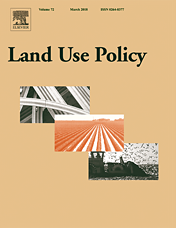Título
Assessing food security and environmental protection in Mexico with a GIS-based Food Environmental Efficiency index
Alias
180301-03-articulo
Portada

Autores
José Mauricio Galeana Pizaña.
Año
2018
Fecha
2018-03-01
Categoría
Artículos
Identificador
ISSN: 0264-8377 DOI: 10.1016/j.landusepol.2018.02.022
Hipervínculo
Hipervínculo revisado
01 Septiembre 2021
Abstract
Trends in food security and environmental protection are usually reported separately and at national level, which may be a great limitation to the assessment of regional policies seeking to improve food self-sufficiency, reduce poverty, and at the same time conserve biodiversity. In this study, a spatially explicit, quantitative index relates national and regional trends of food security with trends of land use change in Mexico. Food security was estimated through aspects of food self-sufficiency (production and consumption patterns of basic staple crops and livestock) and food access (based on the marginalization level of households). Land use change was estimated from the official INEGI Land Use and Land Cover cartography. The Food Environmental Efficiency (FEE) Index was calculated for each ecoregion of Mexico over the past 40 years based on an arithmetic count of significant correlations between food security and land use change. Trends at national level suggest a continuous environmental degradation and no improvement in food security except for maize self-sufficiency. At ecoregion level, the FEE index indicates that livestock expansion in the three most affected ecoregions is associated with a decrease in food security and that extensive cropland expansion is associated with an increase in food security in only one of them. The FEE index proved useful for the assessment of land use policies, since it can weigh regional contributions to food security and environmental tendencies.

